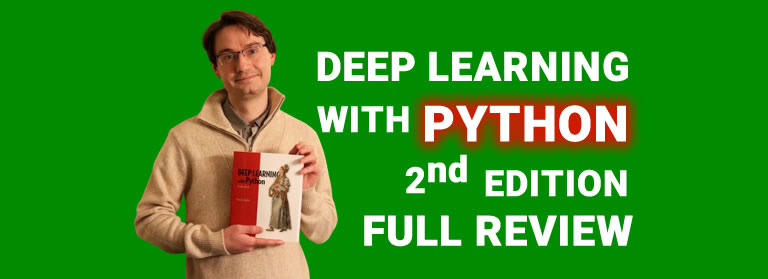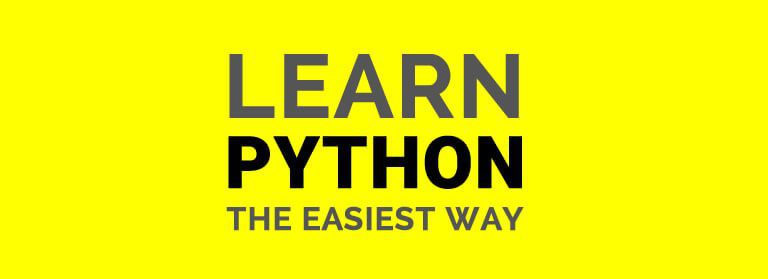Deep Learning With Python Second Edition Best Review 2024


An Overview on Deep Learning With Python Second Edition
Deep Learning With Python Second Edition: “Deep Learning with Python” by François Chollet has solidified its reputation as a cornerstone resource in the ever-evolving landscape of artificial intelligence and machine learning. Since its initial release, the book has served as a guiding light for individuals venturing into the realm of deep learning, offering clear explanations, practical examples, and valuable insights. Now, with the release of the second edition, Chollet has once again raised the bar, delivering an even more comprehensive and insightful exploration of deep learning principles and practices.
At the heart of the second edition lies a deep reverence for both the foundational principles and the cutting-edge advancements in the field of deep learning. Chollet’s meticulous attention to detail is evident throughout the book, as he expertly navigates the complex terrain of neural networks, optimization algorithms, and model architectures. From convolutional neural networks (CNNs) to recurrent neural networks (RNNs) and beyond, Chollet leaves no stone unturned in his quest to demystify the intricacies of deep learning.
One of the most notable improvements in the second edition is its expanded coverage of emerging trends and techniques in deep learning. Chollet deftly integrates recent research findings and industry best practices into the fabric of the book, ensuring that readers are equipped with the latest tools and methodologies for tackling real-world challenges. Whether it’s exploring the potential of unsupervised learning with autoencoders or harnessing the power of transfer learning for domain adaptation, Chollet provides a comprehensive roadmap for navigating the ever-expanding landscape of deep learning.
Moreover, the second edition places a renewed emphasis on practical implementation and hands-on experimentation. Chollet’s decision to use the Keras framework as the primary tool for building deep learning models is a masterstroke, as it allows readers to quickly translate theoretical concepts into tangible code. The book is replete with code examples, interactive exercises, and project-based tutorials, empowering readers to not only understand the underlying principles of deep learning but also to apply them in real-world scenarios.
A Reverence for Foundational Principles:
In “Deep Learning with Python,” François Chollet’s meticulous attention to detail is evident as he delves into the intricate workings of neural networks, optimization algorithms, and model architectures. With clarity and precision, Chollet guides readers through the fundamental concepts and advanced techniques that underpin the field of deep learning.
Neural networks serve as the backbone of deep learning, and Chollet offers a comprehensive exploration of their structure and function. From basic perceptrons to complex convolutional and recurrent networks, he elucidates the principles that govern these powerful computational models. By dissecting neural network architectures layer by layer, Chollet demystifies their inner workings, empowering readers to understand and leverage their capabilities effectively.
Optimization algorithms play a crucial role in training neural networks, and Chollet leaves no stone unturned in elucidating their importance and operation. He provides a detailed overview of gradient descent and its variants, discussing strategies for overcoming common challenges such as vanishing gradients and overfitting. Through clear explanations and illustrative examples, Chollet equips readers with the tools they need to navigate the optimization landscape with confidence.
Model architectures are another focal point of Chollet’s attention to detail, as he explores the diverse array of structures that underlie deep learning systems. Whether discussing classic architectures like LeNet and ResNet or cutting-edge approaches such as transformers and generative adversarial networks (GANs), Chollet provides insight into the design choices and trade-offs that shape these models. By elucidating the strengths and limitations of different architectures, he empowers readers to make informed decisions when designing and implementing deep learning solutions.
Throughout his exploration of neural networks, optimization algorithms, and model architectures, Chollet maintains a commitment to clarity and accessibility. His writing is characterized by lucid explanations, intuitive analogies, and concrete examples, making complex concepts approachable for readers at all levels of expertise. Whether you’re a novice seeking to grasp the basics or an experienced practitioner striving to stay abreast of the latest advancements, Chollet’s attention to detail ensures that “Deep Learning with Python” remains an invaluable resource for understanding the intricacies of deep learning.
Embracing Emerging Trends:
In the second edition of “Deep Learning with Python,” François Chollet takes readers on an even more expansive journey through the ever-evolving landscape of deep learning. Building upon the foundation laid in the first edition, Chollet offers expanded coverage of emerging trends and cutting-edge techniques that have emerged since its initial release.
One of the most striking aspects of the second edition is its integration of recent research findings and industry best practices. Chollet meticulously curates the latest advancements in deep learning, ensuring that readers are equipped with the most up-to-date tools and methodologies for tackling real-world challenges. By synthesizing insights from the forefront of academic research and the trenches of industry practice, Chollet provides a comprehensive roadmap for navigating the rapidly evolving field of deep learning.
From the latest developments in convolutional neural networks (CNNs) to the burgeoning applications of reinforcement learning, the second edition offers a panoramic view of the state-of-the-art in deep learning. Chollet explores emerging trends such as self-supervised learning, meta-learning, and federated learning, shedding light on the innovative approaches that are reshaping the boundaries of what is possible in AI.
Moreover, Chollet’s treatment of emerging trends extends beyond theoretical concepts to practical applications and implementation strategies. Readers will find concrete examples and case studies that illustrate how these cutting-edge techniques can be applied to real-world problems in fields as diverse as healthcare, finance, and autonomous driving. Whether you’re interested in natural language processing, computer vision, or robotics, the second edition has something to offer for practitioners in every domain.
By embracing emerging trends and best practices, Chollet ensures that “Deep Learning with Python” remains at the forefront of the field. Whether you’re a student, researcher, or industry professional, the second edition is an indispensable resource for staying ahead of the curve and mastering the latest advancements in deep learning. With its expanded coverage and practical insights, the book equips readers with the knowledge and tools they need to tackle the most challenging problems in AI and machine learning.
Practical Implementation:
In “Deep Learning with Python,” François Chollet not only elucidates the theoretical underpinnings of deep learning but also emphasizes practical implementation using the Keras framework. Keras, known for its simplicity and flexibility, serves as the primary tool for building deep learning models in the book. Chollet’s decision to focus on Keras is strategic, as it allows readers to quickly translate theoretical concepts into tangible code and experiments.
Throughout the book, Chollet provides abundant code examples and exercises designed to facilitate hands-on learning and application. From simple neural networks to complex architectures like convolutional and recurrent networks, each concept is accompanied by illustrative code snippets that demonstrate how to implement it using Keras. By following along with these examples, readers gain practical experience in constructing and training deep learning models, reinforcing their understanding of the underlying principles.
Moreover, Chollet goes beyond mere code demonstrations to provide comprehensive explanations of the rationale behind each implementation choice. He discusses the significance of different hyperparameters, layer configurations, and optimization algorithms, empowering readers to make informed decisions when designing their own models. By elucidating the thought process behind model construction and training, Chollet equips readers with the skills they need to tackle real-world problems with confidence.
In addition to code examples, “Deep Learning with Python” also includes a variety of exercises and projects that challenge readers to apply their newfound knowledge in creative ways. These exercises range from simple tasks like classifying handwritten digits to more complex challenges such as generating natural language text or designing neural network architectures from scratch. By engaging in hands-on experimentation, readers deepen their understanding of deep learning concepts and develop practical problem-solving skills that are essential for success in the field.
Overall, Chollet’s emphasis on practical implementation using the Keras framework sets “Deep Learning with Python” apart as a uniquely valuable resource for aspiring deep learning practitioners. Whether you’re a novice seeking to gain hands-on experience or an experienced developer looking to expand your skill set, the book provides a wealth of opportunities for learning and growth. With its combination of clear explanations, code examples, and hands-on exercises, “Deep Learning with Python” offers a comprehensive and effective approach to mastering the art of deep learning.
Is Deep Learning with Python Second Edition Worth Your Time?
Ethical Considerations:
In “Deep Learning with Python,” François Chollet goes beyond technical depth to address the ethical implications of deep learning. Recognizing the profound impact that AI systems can have on society, Chollet emphasizes the importance of responsible AI development and the need for ethical considerations to be integrated into every stage of the process.
One of the key ethical considerations that Chollet highlights is fairness. As AI systems increasingly influence decisions in areas such as hiring, lending, and criminal justice, ensuring fairness and equity becomes paramount. Chollet discusses the potential for bias to creep into AI algorithms and the importance of mitigating these biases to prevent discrimination and promote social justice.
Transparency is another critical aspect of ethical AI development that Chollet explores in depth. He advocates for transparency in AI systems, arguing that developers should strive to make their models and decision-making processes as transparent as possible. By opening up AI algorithms to scrutiny and analysis, developers can build trust with users and stakeholders and ensure accountability for the outcomes of their systems.
Accountability is closely tied to transparency, as Chollet explains. Developers should take responsibility for the ethical implications of their AI systems and be prepared to address any negative consequences that arise. Chollet encourages readers to consider the potential societal impacts of their work and to prioritize the well-being of individuals and communities over short-term gains.
Throughout the book, Chollet fosters dialogue around these ethical considerations, challenging readers to think critically about the broader implications of their work. By incorporating ethical discussions into technical discussions, Chollet encourages readers to approach deep learning with a sense of responsibility and mindfulness, recognizing the profound influence that AI systems can have on people’s lives.
Ultimately, Chollet’s emphasis on ethics underscores the broader mission of “Deep Learning with Python”: to empower readers to become thoughtful, conscientious practitioners of deep learning. By integrating ethical considerations into technical discussions, Chollet equips readers with the knowledge and tools they need to navigate the complex ethical landscape of AI development and to build systems that are fair, transparent, and accountable.
Testament to Excellence:
The release of the second edition of “Deep Learning with Python” stands as a testament to François Chollet’s unwavering dedication to excellence in deep learning education. Building upon the success of the first edition, Chollet demonstrates his commitment to continuous improvement and staying at the forefront of the rapidly evolving field of deep learning.
One of the most remarkable aspects of the second edition is its comprehensive nature, catering to a diverse audience ranging from students exploring the fundamentals of deep learning to seasoned researchers and practitioners seeking to refine their expertise. Chollet’s writing strikes a delicate balance between accessibility and depth, making complex concepts understandable for readers at all levels of experience. Whether you’re a beginner looking to grasp the basics or an expert aiming to delve into advanced topics, the second edition offers something for everyone.
Moreover, the breadth of topics covered in the second edition reflects Chollet’s recognition of the multifaceted nature of deep learning. From foundational principles to cutting-edge advancements, Chollet leaves no stone unturned in his quest to provide readers with a comprehensive understanding of the field. Whether it’s exploring classic architectures like convolutional neural networks and recurrent neural networks or delving into emerging trends like self-supervised learning and federated learning, the second edition offers a panoramic view of the state-of-the-art in deep learning.
In addition to its breadth, the second edition also excels in its practicality and relevance to real-world applications. Chollet’s emphasis on practical implementation using the Keras framework ensures that readers not only understand the theoretical concepts but also gain hands-on experience in building and training deep learning models. With abundant code examples, exercises, and projects, the second edition empowers readers to apply their knowledge to solve real-world problems in fields ranging from healthcare and finance to autonomous driving and natural language processing.
Furthermore, Chollet’s commitment to excellence extends beyond the pages of the book to the broader deep learning community. As the creator of Keras, Chollet has played a pivotal role in democratizing deep learning and making it accessible to a wider audience. His contributions to the field have helped countless individuals around the world embark on their deep learning journey and unlock the transformative potential of AI.
In conclusion, the second edition of “Deep Learning with Python” stands as a definitive resource for anyone seeking to master the principles and practices of deep learning. With its comprehensive coverage, practical insights, and commitment to excellence, the book exemplifies Chollet’s dedication to advancing the field of deep learning education and empowering the next generation of AI innovators. Whether you’re a student, researcher, or practitioner, the second edition is sure to inspire, educate, and empower you on your journey into the fascinating world of deep learning.
Meticulously Crafted for All Audiences
Accessible Yet Rigorous:
In crafting the second edition of “Deep Learning with Python,” François Chollet has skillfully balanced accessibility with rigor, ensuring that the book appeals to both beginners and experts alike. Chollet’s ability to strike this delicate balance is a testament to his deep understanding of the subject matter and his commitment to making complex concepts understandable for readers at all levels of expertise.
For beginners, the book offers a gentle introduction to the fundamentals of deep learning, providing clear explanations and intuitive examples to demystify the concepts. Chollet’s writing style is approachable and friendly, making it easy for novice readers to grasp the basics without feeling overwhelmed. By guiding readers through the foundational principles of neural networks, optimization algorithms, and model architectures, Chollet lays a solid groundwork for further exploration and learning.
At the same time, the book also caters to experts in the field, offering in-depth discussions of advanced topics and cutting-edge techniques. Chollet’s treatment of complex concepts is rigorous and thorough, providing readers with the depth of understanding needed to tackle the most challenging problems in deep learning. Whether it’s exploring the intricacies of advanced architectures like transformers and GANs or delving into specialized areas like reinforcement learning and meta-learning, the book offers valuable insights for experienced practitioners looking to expand their knowledge and skills.
Throughout the book, Chollet’s commitment to accessibility is evident in his clear explanations, intuitive examples, and thoughtful organization. Complex topics are broken down into manageable chunks, with each concept building upon the previous ones in a logical progression. By presenting information in a structured and approachable manner, Chollet ensures that readers can follow along easily and retain the information effectively.
Moreover, Chollet’s emphasis on practical implementation using the Keras framework enhances the accessibility of the book for readers of all levels. By providing concrete examples and hands-on exercises, Chollet enables readers to translate theoretical concepts into tangible code and experiments. This practical approach not only reinforces understanding but also instills confidence in readers as they gain experience in building and training deep learning models.
In summary, “Deep Learning with Python” is a masterful blend of accessibility and rigor, crafted to meet the needs of both beginners and experts in the field. Whether you’re just starting your journey into the world of deep learning or seeking to deepen your expertise, Chollet’s comprehensive and approachable approach makes this book an invaluable resource for learners at every stage of their journey.
Updated Content:
The second edition reflects the latest advancements in deep learning, ensuring readers stay abreast of developments in CNNs, RNNs, GANs, and more.
Hands-On Approach:
With practical examples and exercises, Chollet empowers readers to embark on their deep learning journey with confidence, reinforcing theoretical concepts through real-world application.
Focus on Interpretability and Ethics:
Chollet dedicates attention to model interpretability, fairness, and ethics, equipping readers to build responsible and socially conscious AI systems.
“Deep Learning with Python Second Edition” is a must-read for anyone interested in mastering deep learning principles and practices. With its comprehensive coverage, practical insights, and ethical considerations, it’s an invaluable resource for enthusiasts and professionals alike.
Enroll in the Most Popular Python Course on Udemy!
Ready to learn Python flawlessly? Join the highest-rated Python course on Udemy, with over 1500 students enrolled since its launch in 2023! Click below to enroll today and embark on your Python learning journey.
Do you want to learn Python? My Python course on udemy is the most popular, highest rated and will give you a comprehensive Python learning experience. 1500 students has already enrolled since it’s launch in 2023! and learning Python flawlessly! Click on the button below and enroll today.







Responses